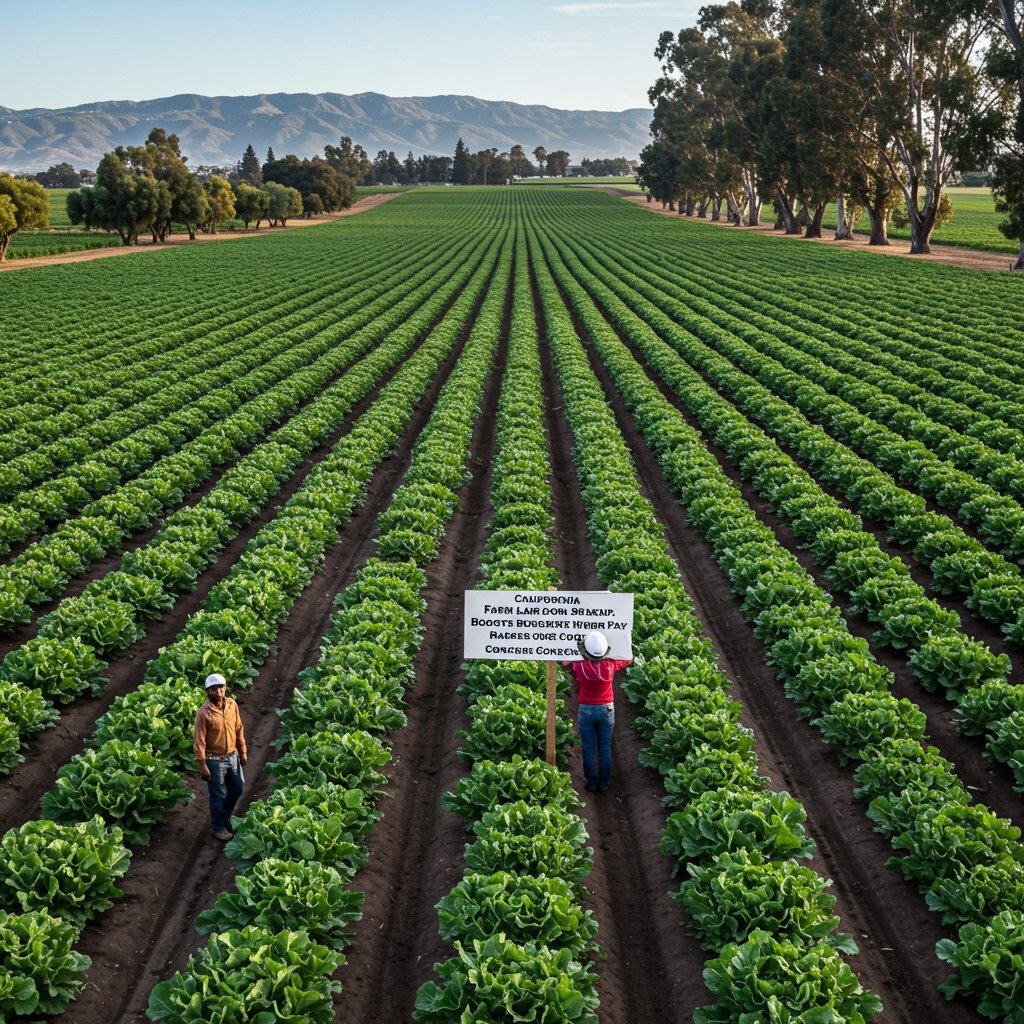California’s AB 2030: A Balancing Act Between Farmworker Benefits and Agricultural Economics
California’s agricultural landscape is poised for significant changes following the passage of Assembly Bill 2030. Signed into law late last year amidst considerable debate, this legislation represents a pivotal moment in the ongoing effort to address the working conditions and compensation of the state’s vital farm labor force. Set to take effect on July 1, 2025, AB 2030 introduces two key provisions designed to enhance protections and earnings for farmworkers, potentially impacting the operational costs for growers and, consequently, consumer prices for fresh produce.
At the heart of AB 2030 is a mandated increase in the guaranteed piece-rate minimum wage. Piece-rate compensation, a common structure in agriculture, pays workers based on the quantity of crop they harvest (e.g., per pound or per box) rather than solely on hours worked. This system can incentivize productivity but has often been criticized for leading to unpredictable wages and potential pressures that compromise safety. AB 2030 stipulates a 15% increase in the guaranteed minimum wage that applies to workers paid by piece rate, specifically those harvesting crops like strawberries and grapes in the state’s major agricultural regions, including the expansive Central Valley and diverse coastal regions. This change aims to provide a more stable and higher wage floor for tens of thousands of agricultural employees, regardless of the piece rate structure, ensuring a baseline level of income that is more reflective of the demanding nature of their work.
In addition to wage adjustments, AB 2030 also introduces stricter heat safety protocols. Farmworkers in California often labor under extreme temperatures, particularly during the peak summer months. Existing regulations provide some protections, but advocates have long argued for enhanced measures to prevent heat-related illness, which can be severe or even fatal. The new law mandates more stringent requirements for access to shade, cool water, and cool-down rest periods, building upon current heat illness prevention standards. These measures are intended to safeguard the health and well-being of workers performing strenuous tasks in high heat, a critical concern given the physical demands of harvesting and cultivating crops.
The introduction of these new requirements has drawn strong reactions from different stakeholders within California’s agricultural sector. Labor advocates, such as the influential United Farm Workers (UFW) union, have lauded AB 2030 as a crucial step towards ensuring fairer treatment and safer working conditions for a workforce that is often vulnerable and essential to the state’s economy. They argue that for too long, piece-rate systems have allowed wages to lag, and heat protections have been insufficient, placing workers at undue risk. The UFW sees the bill as a long-overdue recognition of the valuable contributions of farmworkers and a necessary measure to improve their quality of life and occupational safety.
Conversely, agricultural employers and industry representatives have voiced significant concerns regarding the financial implications of the bill. The California Farm Bureau Federation, a leading voice for the state’s growers, has estimated that the combination of increased guaranteed wages and enhanced heat safety measures will result in a substantial increase in labor costs. According to their analysis, affected growers could see their labor expenses rise by 10% to 18%. For many farming operations, labor represents a significant portion of their overall operating budget. A cost increase of this magnitude, particularly in a sector already facing pressures from drought, market fluctuations, and international competition, could pose considerable financial challenges.
The increased cost burden on growers, as projected by organizations like the Farm Bureau, raises questions about the broader economic impacts of AB 2030. Growers may face difficult decisions about how to absorb these higher expenses. Potential strategies could include investing in labor-saving technology (though this may not be feasible for all crops or operations), finding efficiencies elsewhere in their production process, or, potentially, passing the increased costs onto consumers. The concern is that a rise in the price of California-grown produce, such as strawberries and grapes from the Central Valley and coastal regions, could make these products less competitive in the marketplace or lead to higher prices for consumers at the grocery store. This potential for driving up consumer prices is a key point of caution raised by industry groups.
The debate surrounding AB 2030 highlights the inherent tension between improving conditions for agricultural workers and maintaining the economic viability of farming operations in California. While the bill is celebrated by some as a victory for human dignity and labor rights, it is viewed by others as an additional regulatory and financial burden that could challenge the sustainability of farming, particularly for smaller or less diversified operations. The implementation deadline of July 1, 2025, provides a runway for growers to prepare for the changes, but the long-term effects on the state’s agricultural economy, the structure of farm labor, and the cost of food remain subjects of close observation and ongoing discussion.
As the effective date approaches, stakeholders on all sides will be watching closely to see how the new law is implemented and what its real-world consequences will be. The success of AB 2030 will ultimately be measured by its ability to genuinely improve the lives and safety of California’s farmworkers while allowing the state’s vital agricultural industry to remain productive and competitive.


















